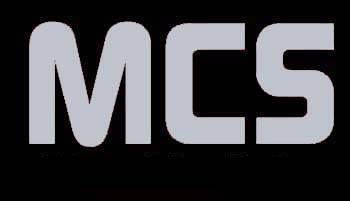
|
|
|
|
|
|
Classic Bikes
Custom Bikes
Individual
Racing Bikes AJP
AJS
Aprilia
Ariel
Avinton / Wakan
Bajaj
Benelli
Beta
Bimota
BMW
Brough Superior
BRP Cam-Am
BSA
Buell / EBR
Bultaco
Cagiva
Campagna
CCM
CF Moto
Combat Motors
Derbi
Deus
Ducati
Excelsior
GASGAS
Ghezzi Brian
Gilera
GIMA
Harley Davidson
Hero
Highland
Honda
Horex
Husaberg
Husqvarna
Hyosung
Indian
Jawa
Kawasaki
KTM
KYMCO
Laverda
Lazareth
Magni
Maico
Mash
Matchless
Mondial
Moto Guzzi
Moto Morini
MV Agusta
MZ / MuZ
NCR
Norton
NSU
Paton
Peugeot
Piaggio
Revival Cycles
Roland Sands
Royal Enfield
Sachs
Sherco
Sunbeam
Suzuki
SWM
SYM
Triumph
TVS
Ural
Velocette
Vespa
Victory
Vincent
VOR
Voxan
Vyrus
Walt Siegl
Walz
Wrenchmonkees
Wunderlich
XTR / Radical
Yamaha
Zero
Video
Technical
Complete Manufacturer List
|
Cagiva 593 GP 500 Racer |
| . |
For a brief moment in the early 1990’s, it looked like Italian company Cagiva was about to put one over the Japanese in the frenzied world of 500cc Grand Prix, as first Eddie Lawson, then John Kocinski won a few races on the firecracker red Italian bike.
Sadly neither Lawson or Kocinski carried on
winning races and Cagiva were almost bankrupted by their GP effort and ended
up flogging off Ducati to the Americans just to stay afloat. But this bike
remains a souvenir of all that glorious Italian energy, passion and
commitment.
Roland Brown rode the C593 Cagiva racer;
For a few brief moments, eight or so laps into the test, piloting the
flame-red factory 500 doesn´t seem so difficult after all. This time the
tight right-left chicane disappears in a rapid flick-flick of the Cagiva´s
handlebars, and the next short straight is gobbled up by a blistering surge
of acceleration from an engine that pulls crisply and strong from well below
6000rpm.
The little bike slips easily through the next long left-hand hairpin,
feeling manoeuvrable and perfectly responsive as I feather the throttle
through Misano´s penultimate bend. At last I´m really beginning to enjoy
myself. This time, my confidence growing, I throw the bike harder into the
final left-hander, finally summoning the courage to wind back the throttle
as I exit onto the start-finish straight.
Suddenly all hell is let loose. The Cagiva rockets forward, its front wheel
rearing up towards the Armco on the right of the track. Backing off, I tread
down into third and the V4´s monster torque hoiks the front wheel high again
as the bike accelerates down the straight with stunning force, my left foot
barely able to keep up despite the convenience of the clutchless, electronic
‘kill-shift´ gear change.
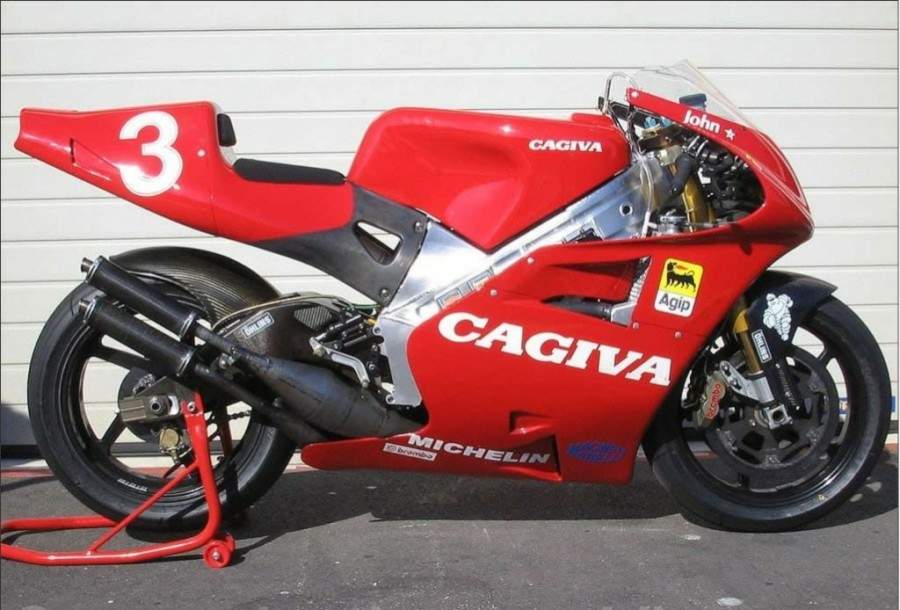
The panic is not over yet. As on the last lap I hit the brakes well before
the 100-metre marker but I´m travelling faster than before; entering the
first bend too rapidly. I squeeze the brake lever harder, and the
combination of ultra-light bike, sticky front Michelin and massive carbon
discs seems to stop the Cagiva almost dead as I fight to prevent myself
being thrown over the handlebars.
With forearms straining and heart pounding I manage to stay in the seat, and
just as quickly the Cagiva is back under control. The bike´s impeccable
handling poise means it recovers to make the right-hand bend with barely a
complaint, and the phenomenal torque of its engine sends it screaming off
again towards the next turn despite being in too high a gear.
But for this novice factory-bike pilot the point has been made, and I won´t
be getting so over-confident on my remaining handful of laps. Riding this
scarlet rocket ship of a 500cc works grand prix bike, with its superb
chassis and new generation of ultra-torquey big-bang V4 engine, is one
thing. Riding it hard, getting anywhere near the limits of its stupendous
performance, is something very different again.
That mastering the Cagiva C593 should be impossible for all but a few riders
should come as no surprise for this, after all, is one of the very fastest
motorcycles on the planet. The last time I´d set eyes on a 500 Cagiva, John
Kocinski had been standing on its pegs and waving on his victory lap after
the US Grand Prix at Laguna Seca. Much of last season´s glory may have
belonged to champions Suzuki but Cagiva, with their first ever dry-race 500
win, had announced that they were serious contenders at last.
It´s been a long haul for the Italian firm whose quest to build a race
winning 500 was launched with an uncompetitive straight-four piloted by
Virginio Ferrari back in 1981. A square-four and various different
V4-powered 500s followed in the Eighties with limited success, although
riders including Jon Ekerold, Raymond Roche and Randy Mamola - who managed a
third place at the wet Belgian GP in 1988 - scored championship points
without ever seriously troubling the Japanese factories.
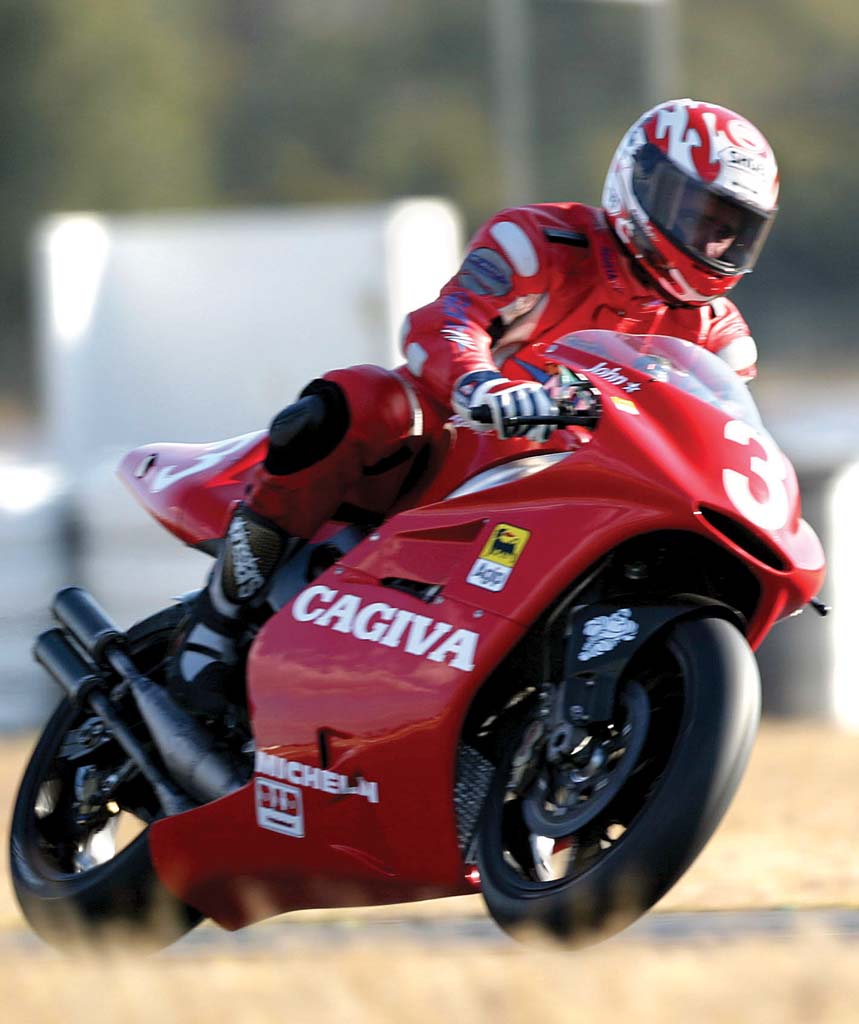
During the last few seasons, though, Cagiva have been edging closer and
closer. In 1992 they finally won a race, when Eddie Lawson - the four-times
champ hired for mega-money a year earlier - made an inspired tyre choice at
a drying Hungarian GP. Ask Cagiva technical director Riccardo Rosa or
race-team boss Fiorenzo Fanali which one factor has done most to make the
bike competitive, and they insist that it is a combination of little things:
technical changes, better organisation, rider input. But the name Eddie
crops up a lot.
Last season, with rapid American Doug Chandler and hot young Aussie Mat
Mladin on board, promised much. But both riders struggled with injuries, and
with the semi-active Showa suspension of the new C593 (also referred to as
the V593, but Cagiva prefer the C designation). Changing to Öhlins
suspension made a big difference but it was only when wild child Kocinski,
desperate for a 500 ride after splitting with Suzuki, joined the team that
Cagiva´s season took off with two fourth places and then that epic Laguna
Seca win.
John´s name and number three plate are on the fairing of the familiar red
machine that sits in the pit garage of a cold and windy Misano racetrack.
The Cagiva looks small and muscular. Perhaps the C593 lacks the sleek style
of some previous years, but it´s streamlined and supremely purposeful, from
the big air intake in its nose to the twin carbon tailpipes exiting under
the seat.
Pressurising the airbox gave an important mid-season power boost to a motor
that now puts out a little over 175bhp at 12,500rpm, slightly down on
Honda´s NSR and Suzuki´s RGV, but roughly level with Yamaha´s YZR. It´s an
80-degree V4, with twin counter-rotating crankshafts (like all but the
Honda) and, naturally, a big-bang firing order. Carburation is by four 36mm
Mikunis, with fuel-injection a distinct possibility for next season.
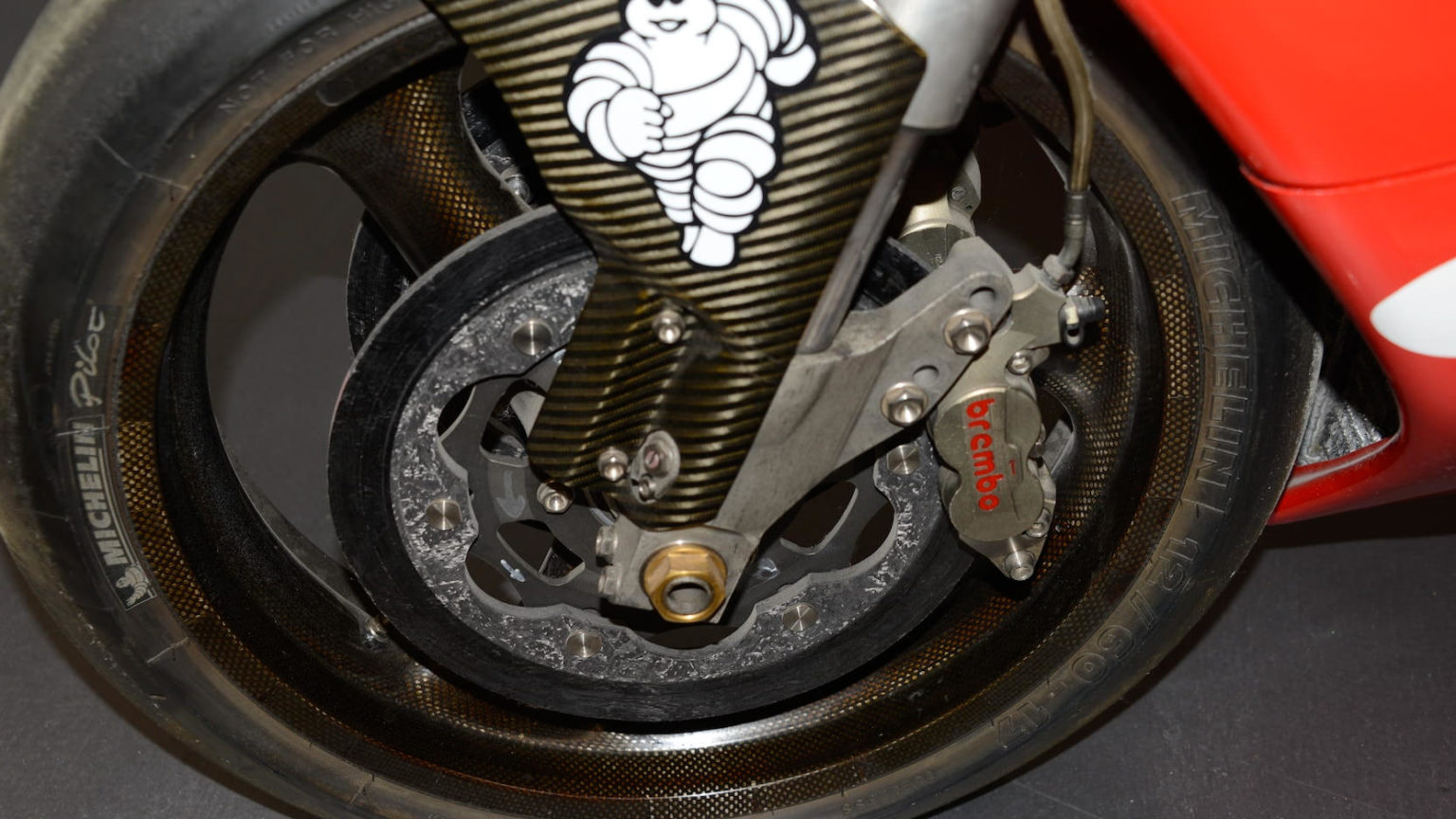
Cagiva have tried a carbon-fibre frame in the past, but as usual this bike´s
chassis is based around enormous twin beams of finely formed aviation alloy.
Thick gold inverted Öhlins forks run down from magnesium triple-clamps to a
Ferrari-built, carbon-fibre front wheel with carbon discs and four-pot
Brembo calipers. Alongside the right fork stanchion is a rod to record
suspension movement for the data-logging system; bolted to the top yoke is a
hydraulic shock preload adjuster; on the right handlebar is a disconnected
three-way switch that once worked Showa´s abortive electronic damping.
The bike drips with carbon-fibre, from small details like the tacho body and
clip-on handlebars to the massive swing arm and all bodywork, including the
self-supporting seat unit. Much to my relief, Fanali obligingly offers to
cut down the seat-back foam to make Little John´s pocket rocket a better fit
for my lanky 6ft 4in body. Then a red-jacketed mechanic removes the
tyre-warmers, bumps the bike into life and warms its engine, sending the
evocative smell of racing oil wafting through the garage.
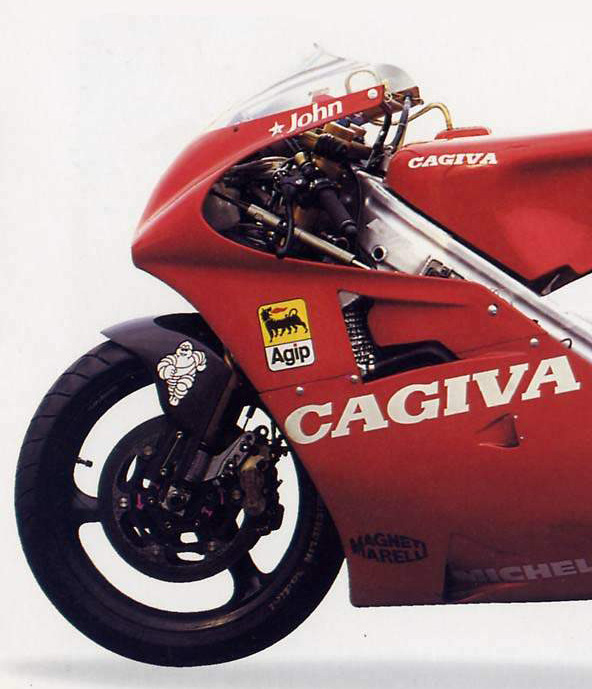
Misano´s surface is cold and dusty, but another rider has the thankless task
of getting the tyres - a treaded front, due to the conditions, and big
180-section rear slick - fully up to temperature. He comes in shaking his
head at the slippery track, and making tucking-in motions with his hands.
Just what´s needed before my first ever ride on a 500cc GP bike. But there´s
no time to waste and shortly afterwards I´m off, being pushed down the
pit-lane, the motor reluctant to fire at first, then rasping into life and
thrusting me out on to the empty circuit.
I´m expecting a snarling, fire-breathing monster of a bike, and as Misano´s
long, decreasing-radius left-hander gradually unwinds I discover that the
Cagiva can certainly be that. I´ve ridden down Misano´s back straight many
times on a variety of fast roadbikes. Now I discover that those bikes
weren´t really fast, and that on a factory 500, Misano doesn´t have a back
straight. So violent is the C593´s acceleration out of the last, 100mph-plus
left-hand kink that almost instantly the bike is approaching the next tight
turn at warp speed, and it´s time to get back on the brakes.
So I grab the lever and flick down a few gears, and the Cagiva sheds speed
with amazing rapidity, tracking through the second-gear left-hander with
marvellous stability and control despite my ragged approach and extreme
caution with the throttle. For the first few laps I´m barely conscious of
the handling; the bike simply goes where it´s pointed, steering easily,
gripping surely, remaining stable despite my often less-than-smooth
manoeuvring.
It´s supremely and surprisingly easy to ride reasonably fast, thanks partly
to the wonderfully refined nature of the big-bang motor. Before the 1992
season, factory 500s were peaky beasts whose power came in with a rush. Even
the non-big-bang Yamaha motor used by privateers last season is far less
tractable than a modern factory V4 like the 593, which pulls as strongly and
smoothly from 4000rpm as most roadbikes.
Considerably more smoothly than many, in fact. At a shade over 130kg, the
C593 is barely heavier than Cagiva´s sweet-handling Mito 125 race-replica
roadster. As well as being far more tractable than the 125, the 500 has a
much stiffer frame, plus infinitely more sophisticated suspension and
brakes. Provided the throttle was never opened far, a relative motorcycling
novice could circulate Misano all day dreaming of dicing with Schwantz and
Doohan.
The reality, as my brief burst of last-bend heroics illustrated so vividly,
is very different indeed. Mentioning that the C593 is over five times as
powerful as an unrestricted Mito doesn´t sound so outrageous if you say it
quickly. But its phenomenal blend of poise and power-to-weight ratio ensures
that this tiny racebike accelerates, stops and turns with a speed way beyond
the nerve and reflexes of even most expert riders. Treat it right, and on a
good day it would be the fastest thing on two wheels around this racetrack.
One false move, and it would flick you into the trackside dust in a flash.
If proof were needed of the skill required to ride the C593 at grand prix
pace, it was provided by Cagiva´s data-logging system. Never mind the fact
that, after ten laps, my best time of 1min 56sec was over 20 seconds slower
than Doug Chandler´s best at the pre-grand prix IRTA test-session. (Riders
who´d attended both reckoned the difference in track conditions added 10
seconds to lap times.) More revealing was the throttle-position graph, which
showed that while I´d held the Cagiva´s Mikunis fully open for a few seconds
just once a lap, Chandler had been flat-out, at least momentarily, at five
different points on the track.
It´s a humbling experience, riding a factory GP machine like the C593. The
bike is so good that it can give you a momentary false sense of security.
But try pushing it harder, using it in the way it was built to be used, and
you´re very abruptly reminded that ordinary mortals can only hope to scratch
the surface of its awesome potential. After riding the Cagiva C593, I have
slightly more idea of what John Kocinski was dealing with when he won the US
Grand Prix on this bike. How he did it is more of a mystery than ever.
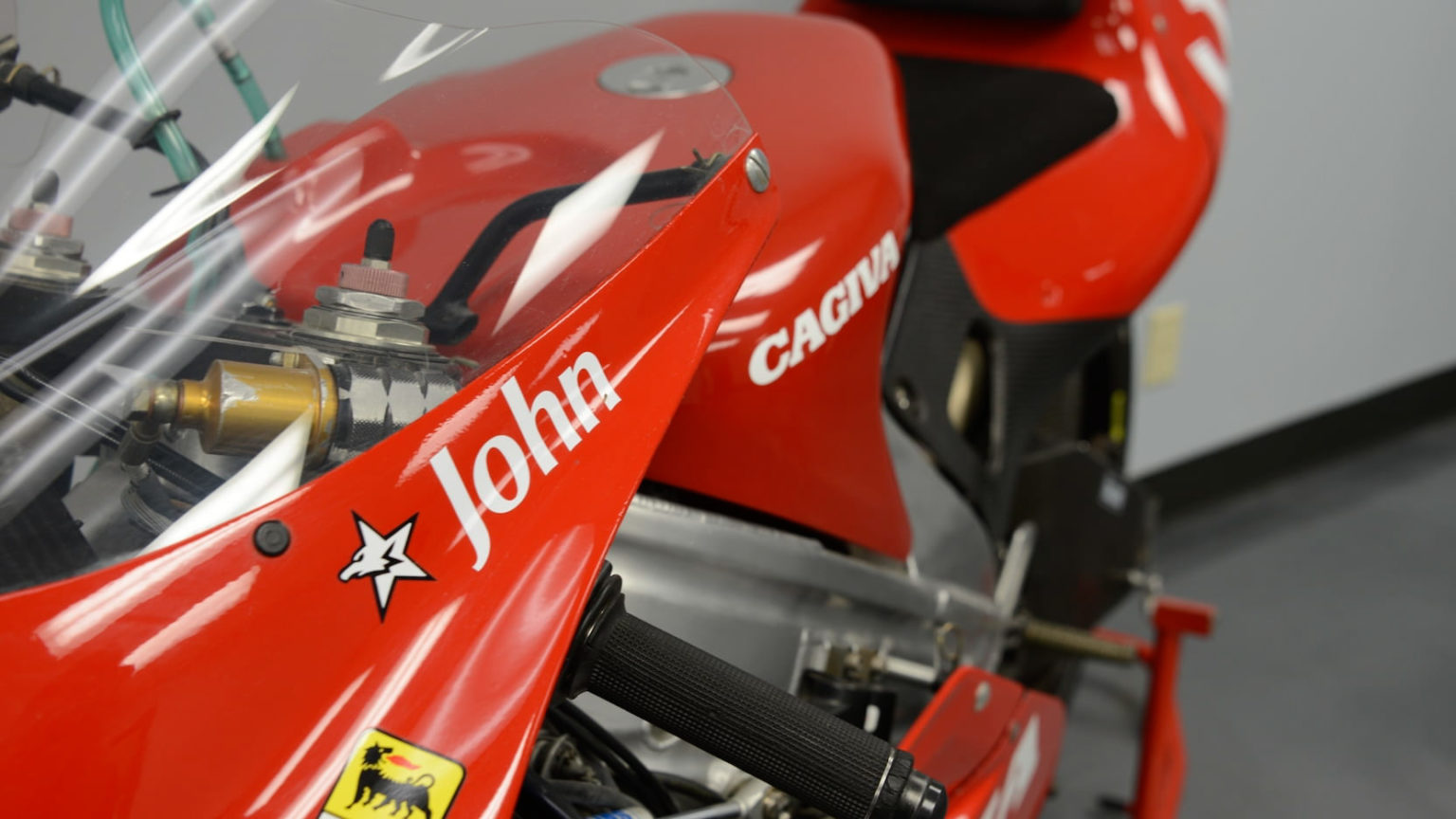
Vital Statistics
Engine Water-cooled 80-degree twin-crank V4
cc 498cc
Claimed power (bhp)
Compression ratio
Transmission Six speed
Cycle parts
Frame Aluminium twin beam
Suspension, front 46mm inverted Öhlins fork, adjustable for preload,
compression and rebound damping
Rear Öhlins monoshock, adjustable for preload, compression and rebound
damping
Brakes, front Twin 320mm carbon discs, four-piston Brembo calipers
Rear Single carbon disc, twin-piston caliper
Tyres, front 120/60 x 17in Michelin
Rear 180/67 x 17in Michelin
Wheelbase 1395mm (54.9in)
Dry weight 128.5kg (283lb) without fuel tank
Performance
Top speed 190 mph(est)
Fuel capacity
Buying Info
Current price not for sale
Source .carolenash.com
|
Any corrections or more information on these motorcycles will be kindly appreciated. |